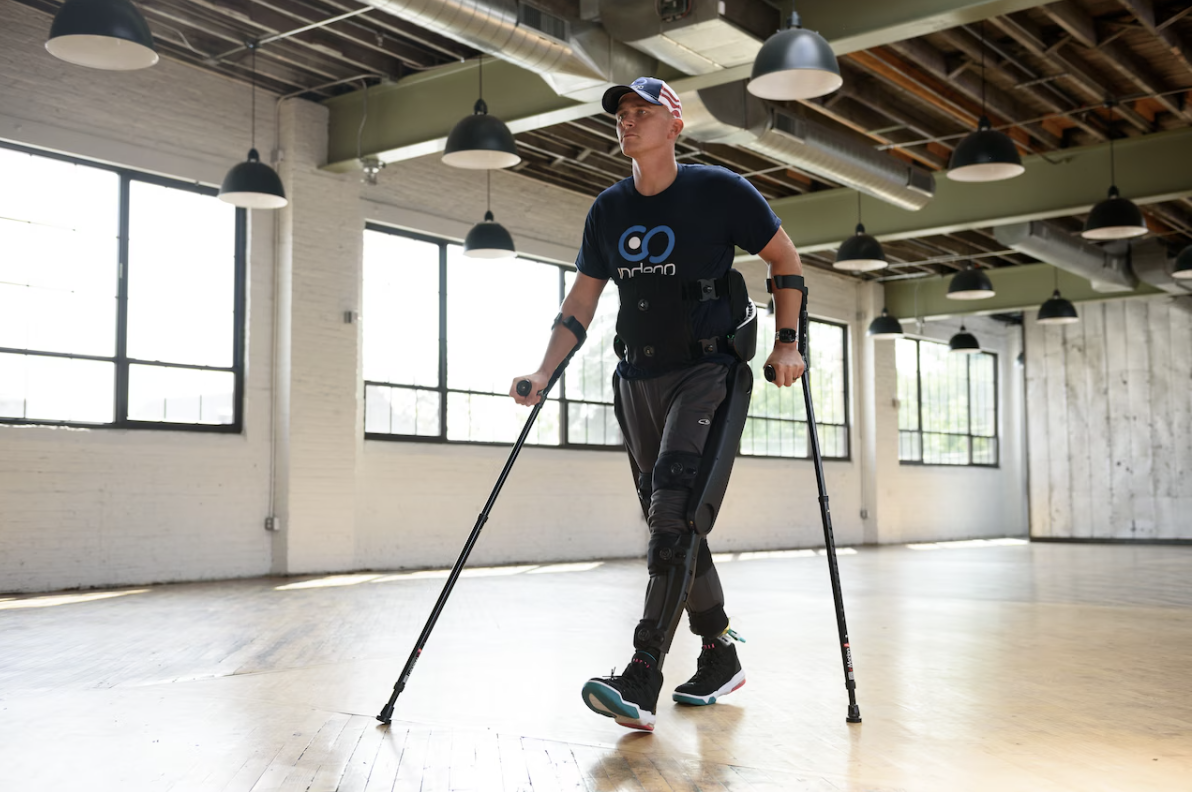Americans proudly place importance on thanking those who have served our country in defense of our freedoms, but we also must recognize that we have an obligation to many whose lives have been changed through debilitating injuries.
While those veterans have experienced many types of injuries with varying levels of severity, spinal-cord injuries suffered on the battlefield or elsewhere severely limit a person’s mobility, profoundly affect physical health and mental well-being, and create the most life-altering challenges a person is likely to ever experience.
Until a cure for paralysis is found, one of the most effective approaches to help patients rehabilitate, maintain as much mobility as possible, and improve physical and mental health is through the use of a powered exoskeleton. The device, sometimes called a “robotic suit,” allows paraplegics to stand and walk on their own, providing those with a spinal-cord injury a new level of functional independence and upright mobility.
Jeff Combs, who suffered 10 shattered vertebrae in a 2012 motorcycle accident as a Marine stationed in California, was introduced to an exoskeleton in December 2018 and touted the “absolutely incredible” emotional and psychological benefits that accompany physical benefits that it affords.
“I’m living again,” Combs said after demonstrating the device to loud applause from St. Louis VA Medical Center hospital staff, family, friends and others. “It gives me something to look forward to. That’s something I didn’t have before.”
Exoskeletons are proving to transform the lives of veterans with spinal-cord injuries and those who have suffered a stroke or traumatic brain injury. In a 2015
“60 Minutes” interview, then-U.S. Secretary of Veterans Affairs Robert McDonald said the best thing he had seen since starting his job was the agency’s use of the exoskeleton. Patients who have used such devices for rehabilitation agree with McDonald.
Another veteran, who was paralyzed during an off-duty accident that broke five vertebrae in 1991, said as he wore an exoskeleton in 2019 that it would help his body maintain strength, bone density and healthy blood pressure. He explained, “If one day there is a cure, my body needs to be ready to get up and get to it.”
Through the marvels of modern technology, we can answer paralyzed veterans’ wishes to walk again. Thankfully, the Veterans Health Administration (VHA) has been a leader in deploying exoskeleton technology. In addition to developing a national clinical protocol in 2016 for the evaluation, trial, and purchase of powered exoskeleton systems for spinal-cord-injured veterans, the VHA also launched a four-year study in November 2016 into the device’s potential benefits.
While the study’s findings have not been finalized, they are expected to underscore the technology’s numerous positive effects on the physical and mental health of users. These events and the VHA’s efforts to facilitate nationwide use of this technology for the thousands of veterans who suffered serious brain or spinal-cord injuries during the long War on Terror could also prove beneficial to the estimated 282,000 other Americans living with spinal-cord injuries.
This technology’s promise to empower injured veterans was vividly demonstrated on Aug. 26 at Fort McHenry in Baltimore, when five veterans stood proudly and saluted then-President Donald Trump after Vice President Mike Pence’s acceptance speech at the 2020 Republican National Convention. And, it is one promise that deserves attention and support because an investment in such technology will pay huge dividends in the productivity, well-being, and human dignity of our veterans who have invested so much in our freedom and security.
That power is within the grasp of our elected officials. Now is the time for them to begin working together on a practical plan of action for the year ahead.

